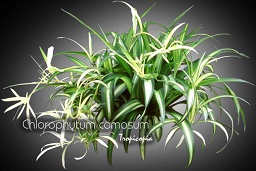Table of contents
Spider plant

Latin Name: Chlorophytum comosum
Category: Hanging
Family: Liliaceae
Origin: Central Africa
Climate: Tropical to subtropical
Growing Zones: 11, 9
Care Instructions
The Spider plant (Chlorophytum comosum) is a tropical to subtropical plant that originates from Central Africa. This hanging plant belongs to the Liliaceae family and is well-suited for growing in USDA zones 11, 9.
Complete Care Guide for Spider Plant (Chlorophytum comosum)
Watering Requirements
The Spider Plant is relatively forgiving when it comes to watering, making it an excellent choice for both novice and experienced gardeners. It thrives in moderately moist soil but is susceptible to root rot if overwatered. A good rule of thumb is to allow the top inch of soil to dry out before watering again. During the growing season (spring and summer), you may need to water your Spider Plant once a week, while in the dormant months (fall and winter), reduce watering to every two weeks. Always use room temperature water, as cold water can shock the plant. Additionally, if you notice the leaf tips turning brown, it may be a sign of underwatering or low humidity.
Light Conditions
Spider Plants prefer bright, indirect sunlight but can also tolerate lower light conditions. Direct sunlight can scorch their leaves, leading to unsightly brown tips. Ideally, place your Spider Plant near a window that receives filtered light, such as a north or east-facing window. If you notice the plant becoming leggy or the variegation fading, it may be a sign that it needs more light. Conversely, if the leaves are turning yellow, it could be receiving too much direct sunlight. Rotate the plant occasionally to ensure even growth and exposure to light.
Soil Preferences
Spider Plants thrive in well-draining potting soil that retains some moisture without becoming soggy. A standard houseplant potting mix is usually sufficient, but you can enhance drainage by adding perlite or sand. The ideal pH for Spider Plants is slightly acidic to neutral (around 6.0 to 7.0). Fertilization is not necessary during the winter months, but during the growing season, you can feed your Spider Plant with a balanced, water-soluble fertilizer every 4-6 weeks. Be cautious not to over-fertilize, as this can lead to salt buildup in the soil, which can harm the plant.
Pests and Diseases
While Spider Plants are generally resilient, they can be susceptible to a few common pests, including spider mites, aphids, and mealybugs. Regularly inspect the undersides of leaves for signs of infestation. If you notice pests, you can treat them by wiping the leaves with a damp cloth or spraying the plant with insecticidal soap or neem oil. Additionally, keep an eye out for fungal diseases, which can occur if the plant is overwatered or in overly humid conditions. Signs of fungal issues include yellowing leaves and a musty smell. To prevent these problems, ensure proper air circulation around the plant and avoid wetting the leaves when watering.
Special Care Tips
To keep your Spider Plant healthy and thriving, consider the following special care tips: First, repot your Spider Plant every couple of years to refresh the soil and provide more space for growth. This is especially important if you notice the roots are becoming crowded. Second, Spider Plants are known for producing “pups” or offshoots. You can propagate these pups by cutting them off and placing them in water or directly into soil once they develop roots. Lastly, maintain a humidity level of around 40-60% for optimal growth, as Spider Plants appreciate a bit of humidity. If your home is particularly dry, consider using a pebble tray or a humidifier to increase moisture levels around the plant.








